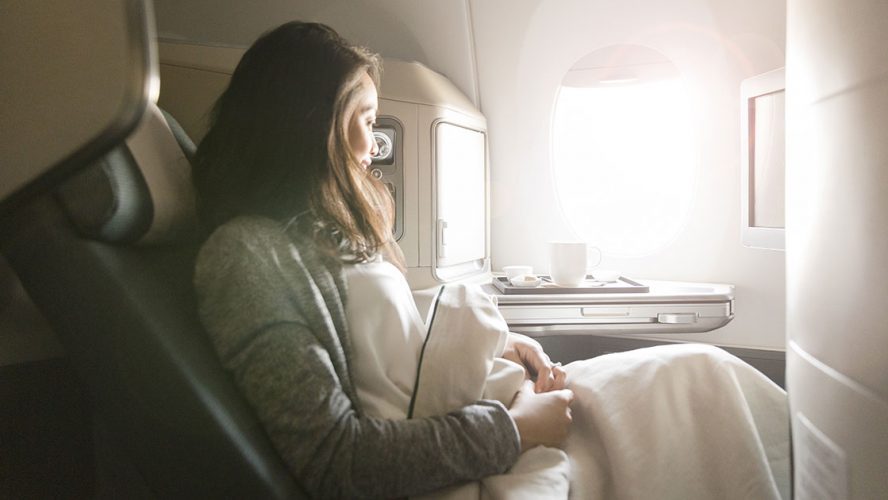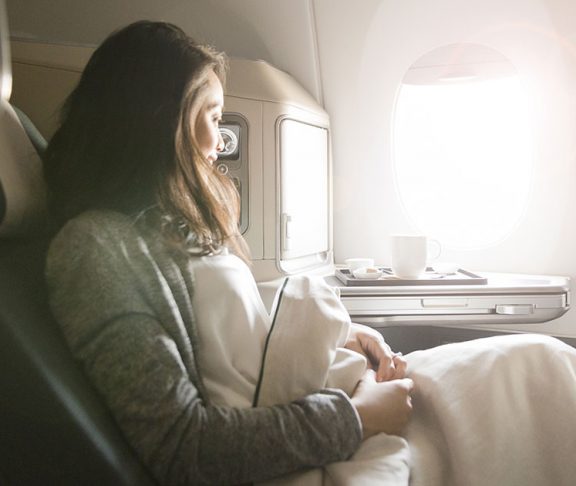From the fuel they burn to the food they serve, airlines are forging a more sustainable way to travel.
As climate change dominates the global conversation, every aspect of our lives is being reassessed in terms of its impact on the world. Airline travel is no exception; a recent United Nations report predicts that airplane emissions of carbon dioxide will triple by 2050 — and some estimates go even higher.
“People are more conscious about the level of impact we are having on the environment,” says Philippe Lacamp, senior vice president of the Americas at Cathay Pacific Airways, a Hong Kong-based airline with a fleet of about 240 aircraft. “We have to be mindful of that.”
Leading the way
Lacamp points out that the airline industry has been a leader in developing sustainable and environmentally-friendly practices. “The airline industry is the first industry in the world to have agreed to an overarching international carbon neutral growth target,” he notes.
Fuel is one of the key factors for airlines seeking to be environmentally mindful. “For most airlines, fuel is the single largest cost,” Lacamp notes. “Carbon offsets can be very effective when effectively administered, and the use of zero-rated biofuel will help decarbonize the industry.”
The switch to biofuels is exciting, especially as it has the potential to free airlines from the volatility of oil prices, but Lacamp notes that it will take time. “You can’t just flip a switch and move completely to biofuel. That’s going to be decades in the making.”
But there are other strategies that can be pursued. Technology is incredibly important, as more advanced engines can run as much as 20 percent more efficiently, and composite materials lighten newer planes so they require less fuel to fly. Cathay Pacific, for example, has invested in the new A350 model from Airbus, a plane that burns 25 percent less fuel than other, older aircraft types and will be taking delivery of the next generation B777-900X.
Sustainability in operations
When it comes to promoting sustainability, every single detail of the flight experience can have an impact, from the sourcing of food for in-flight meals to how waste management is handled. Airlines are relying on their supply chains to provide them with innovative ways to make every aspect of a flight more environmentally sound.
Cathay Pacific, for example, has developed blankets made from recycled plastic bottles and in-flight carpets manufactured using regenerated nylon waste materials, such as discarded fishing nets, fabric and carpets. It has also pushed its suppliers to offer sustainable seafood and is the first airline in the world to serve OmniPork, a plant-based meat alternative.
The single-use lifestyle
Both tourists and business travelers are increasingly concerned with the impact of their travel choices. Lacamp offers some simple advice on how to ensure the airline you choose is pursuing sustainability.
“Number one, make sure the airline you’re traveling with is investing in the best technology available,” he says. “New airplanes that are more efficient and lighter are going to have less impact. You want to make sure they are aligned in terms of the waste footprint — a number of airlines are effectively focusing on the reduction of single-use plastics. That is something we’ve been working on internally. It comes down to what is included in the value proposition: do people feel they’re getting value for money in a way that they can confidently feel addresses sustainability? Is the airline taking responsibility for reducing its overall environmental impact through innovative and meaningful solutions and not simply “greenwashing?”
With the environment likely to dominate all discourse for the foreseeable future, we all have to make responsible, sustainable choices. Airlines are making it easier to do so when we travel, at least.


